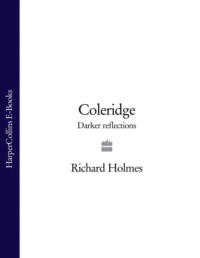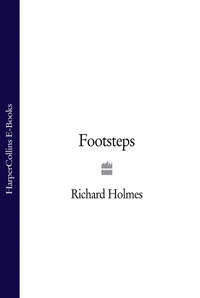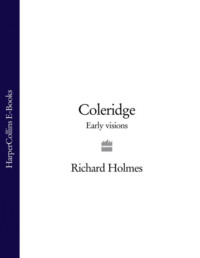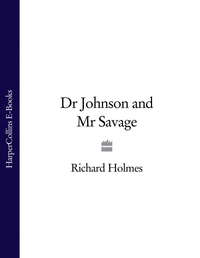
Полная версия
The Age of Wonder: How the Romantic Generation Discovered the Beauty and Terror of Science
♣ A typical brass eighteenth-century orrery showed the sequence of six known planets: Mercury, Venus, Earth, Mars, Jupiter (with moons) and Saturn (with rings) orbiting around a central sun (sometimes operated by clockwork and illuminated by candles). Flamsteed showed all constellations-such as Herschel’s early favourites Orion, Andromeda and Taurus-against mythological engravings of their signs: the Hunter, the Goddess, the Bull. His Atlas Coelestis catalogued 3,000 stars; the modern Hubble telescope has identified some nineteen million. But the presentation of the night sky as a curved dome of mythological constellations is still quite usual, as for instance in the magnificently restored curved ceiling of Grand Central Station, New York.
♣ The use of horse-dung moulds for casting metal mirrors continued well into the twentieth century, with the 101-inch mirror of the Mount Wilson telescope in California, cast in Paris in 1920 and eventually used by Edwin Hubble to confirm Herschel’s theories about the nature and distance of galaxies in 1922. See Gale Christianson, Edwin Hubble: Mariner of the Nebulae (1995). Precision was never easy to obtain: the mirror of the modern orbiting Hubble Space Telescope was found to be two micrometres too flat at the edges, an error which cost $1.5 billion to correct in 1992.
♣ In describing the rebel angel’s enormous glowing shield, Milton contrives in Paradise Lost a beautiful reference to Galileo’s refractor telescope and the view he achieved of the moon.
…The broad circumference
Hung on his shoulders like the Moon, whose orb
Through optic glass the Tuscan artist views
At evening from the top of Fiesole.
Or in Val d’Arno, to descry new lands,
Rivers, or mountains in her spotty globe.
(Paradise Lost, Book I, lines 288-. See also Book III, lines 589-, and Book 5, 262-)
Milton here includes Galileo’s confirmation of an imperfect, ‘spotty’ globe, as described in his famous treatise The Starry Messenger (1610). His observations of rugged lunar mountains and irregular craters proved that not all celestial objects were perfect, and so the theologians were wrong about the nature of God’s creation (as well as about the movement of the earth around the sun). More subtly, Milton puts forward the notion of the moon as the earth’s cosmic shield, battered by many warlike blows from meteors. A modern poet might assign that task to Jupiter. As a young man Milton claimed to have met Galileo in 1638, during his tour of Italy, and discussed the new cosmology. ‘There it was that I found and visited the famous Galileo, grown old, a prisoner to the Inquisition, for thinking in astronomy otherwise than the Franciscan and Dominican licensers thought’-John Milton, Areopagitica (1644).
♣ The Great Andromeda galaxy, now classified as M.31, is 2.8 billion light years away, part of the laconically named ‘Local Group’ of galaxies, which includes our Milky Way. The Orion nebula, M.42, hangs just below the three stars of Orion’s belt, and is a gaseous star-cluster within our own galaxy, a mere 1.6 thousand light years away, sometimes known as the Sword of Orion. The M. numbers were assigned by Herschel’s contemporary, the Parisian astronomer Charles Messier, in an annual publication known as La Connaissance des Temps. His catalogue for 1780 held sixty-eight deep-sky objects. No astronomer yet had the least idea of the enormous distances involved, so huge that they cannot be given in terms of conventional ‘length’ measurement at all, but either in terms of the distance covered by a moving pulse of light in one year (‘light years’), or else as a purely mathematical expression based on parallax and now given inelegantly as ‘parsecs’. One parsec is 3.6 light years, but this does not seem to help much. One interesting psychological side-effect of this is that the universe became less and less easy to imagine visually. Stephen Hawking has remarked, in A Brief History of Time (1988), that he always found it a positive hindrance to attempt to visualise cosmological values.
♣ As with road directions, a diagram is a much better way to explain parallax than a written sentence. But it is interesting to try. Parallax is basically a trigonometrical calculation applied to the heavens. Stellar parallax is a calculation which is obtained by measuring the angle of a star from the earth, and then measuring it again after six months. The earth’s movement during that interval provides a long base line in space for triangulation. So the difference in the two angles of the same star (the parallax) after six months can be used in theory to calculate its distance. In fact single stars are so far away that they did not provide sufficient parallax to be measured with the techniques available at the time. Herschel thought that double stars might provide a more obvious parallax, by triangulating their movements against each other, as observed over six months from earth. In fact no sufficient parallax was observed until the nineteenth century, when Thomas Henderson measured the distance to the nearest star, Alpha Centauri, as 4.5 light years in 1832, and the German astronomer Friedrich Bessel measured the distance to 61 Cygni as 10.3 light years in 1838. As both published their results in 1838, there was a priority dispute. The first galactic distances were established by Edwin Hubble, using the celebrated ‘red-shift’ method in the 1920s. It is intriguing that towards the end of his career Hubble thought that ‘red-shift’ might be less reliable than he had originally supposed, and galactic distances are still an area of dispute, although the ‘age’ of the entire universe is currently agreed at 13.7 billion years. Andromeda, incidentally, is ‘blue-shifted’, and therefore approaching our Milky Way, with which it will eventually collide-or cohabit.
♣ Young, in Night Thoughts, also imagined an infinitely distant planet with extraterrestrial inhabitants, as if it were some remote Pacific island, not unlike Tahiti perhaps:
Canst thou not figure it, an Isle, almost
Too small for notice in the Vast of being;
Severed by mighty Seas of unbuilt Space
From other Realms; from ample Continents
Of higher Life, where nobler Natives dwell.
(Edward Young, Night Thoughts on Life, Death and Immortality, 1742-45, ‘Night IX, and Last’)
♣ This question bears on the whole nature of science history and biography. Michael Hoskin has suggested in his essay ‘On Writing the History of Modern Astronomy’ (1980) that most histories of science continue to be ‘uninterrupted chronicles’, which run along ‘handing out medals to those who “got it right”’. They ignore the history of error, so central to the scientific process, and fail to illuminate science as a ‘creative human activity’ which involves the whole personality and has a broad social context-Journal for the History of Astronomy 11 (1980). To this one might add that Romanticism introduced three important themes into science biography. First, the ‘Newton syndrome’, the notion of ‘scientific genius’, in which science is largely advanced by a small number of preternaturally gifted (and usually isolated) individuals. Second, the existence of the ‘Eureka moment’, in which great discoveries are made without warning (or much preparation) in a sudden, blazing instant of revelation and synthesis. Third, the ‘Frankenstein nightmare’, in which all scientific progress is really a disguised form of destruction. See Thomas Söderqvist (ed.), The Poetics of Scientific Biography (2007).
♣ The naming of the new planet was much disputed, and was not generally agreed until the mid-nineteenth century. Johann Bode, the editor of the authoritative Berlin Astronomical Yearbook, which quickly popularised the name ‘Uranus’, urged that a single name from classical mythology, with no national overtones, was required. With impeccable Prussian logic he pointed out that in Greek mythology Saturn (Kronos) was the father of Jupiter (Zeus), and Uranus (the Greek sky god) was the father of Saturn. It is so recorded in his great Uranographia (1801), which became the most influential celestial atlas of the early nineteenth century, replacing Flamsteed’s and cataloguing some 15,000 naked-eye stars.
♣ It was also the first planet that was not easily visible and distinctive to the naked human eye (by colour, shape or position), and indeed it is quite frustrating to attempt to find with modern binoculars. Its presence was therefore curiously remote and mysterious, emphasising the largeness and strangeness of the new solar system (now doubled in size), but also breaking up the old, affectionate feeling for a much-loved planetary family. It is arguable that Uranus has still not fully entered into the popular mythology of the solar system, a difficulty not helped by the awkward pronunciation of its name in English, which worked better when given to the metal uranium in 1789. Herschel’s son John tried to remedy this by giving Uranus’s-try saying that!-two moons the feathery Shakespearean names of Titania and Oberon, from A Midsummer Night’s Dream.
♣ The Botanic Garden was the best-selling long poem in English throughout the 1790s, after which its popularity suddenly declined, probably because its science was thought to be too materialist and ‘French’. It was the first poem which presented itself in terms of a moving, ‘photographic’ image of the world: ‘Gentle Reader…Here a Camera Obscura is presented to thy view, in which are lights and shade dancing on a white canvas, and magnified into apparent life!-if thou art perfectly at leisure for such trivial amusement, walk in and view the WONDERS of my ENCHANTED GARDEN.’ Darwin’s ‘antique’ prose style in this Prologue was an ironic foil to the dense, plain, highly informative manner of his scientific footnotes. Together these notes added up to a remarkable survey of the current state of the physical sciences in 1790.
♣ Moon and star imagery recurs in Coleridge’s poetry throughout his life. One of his earliest known poems, ‘To the Autumnal Moon’, was a sonnet written at the age of sixteen from the lead rooftop of his London school. Many of his great West Country poems, such as ‘Frost at Midnight’ (1798), may be said to be suffused with moonlight. Greta Hall, where Coleridge lived at Keswick, was an old observatory, and from its leads he frequently recorded the state of moon, stars and the night sky, as well as his own little boy Hartley’s comments on them. His famous poem ‘Dejection’ (1802) begins with the image of the ‘winter-bright’ new moon, with ‘the old Moon in her lap’, presaging a storm. When later living alone at Malta, he used a naval telescope to observe the moon and stars, and wrote many notebook entries about his inexplicable instinct to worship the moon (1805). Even such a late poem as ‘Limbo’, probably written at Highgate, dramatises himself as an old man gazing up at the moon in a garden. He is blind-‘a statue hath such eyes’-yet mysteriously he can still sense the moonlight pouring down on him like a benediction:
Конец ознакомительного фрагмента.
Текст предоставлен ООО «ЛитРес».
Прочитайте эту книгу целиком, купив полную легальную версию на ЛитРес.
Безопасно оплатить книгу можно банковской картой Visa, MasterCard, Maestro, со счета мобильного телефона, с платежного терминала, в салоне МТС или Связной, через PayPal, WebMoney, Яндекс.Деньги, QIWI Кошелек, бонусными картами или другим удобным Вам способом.









